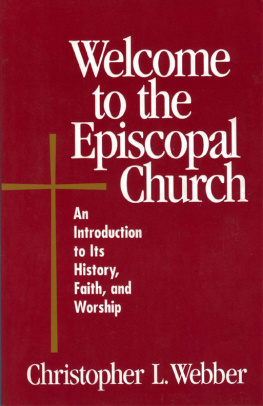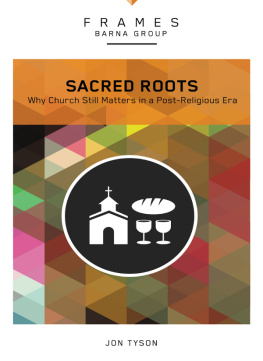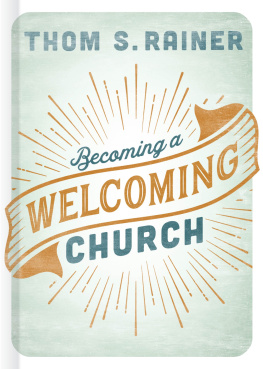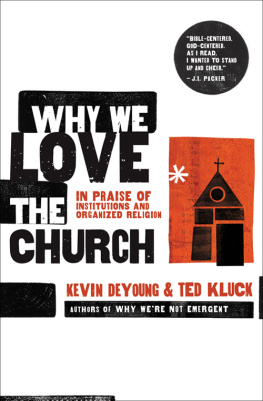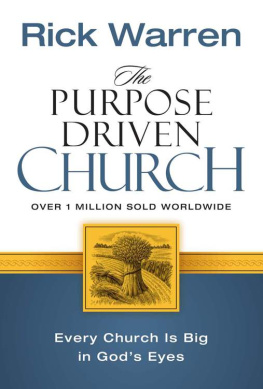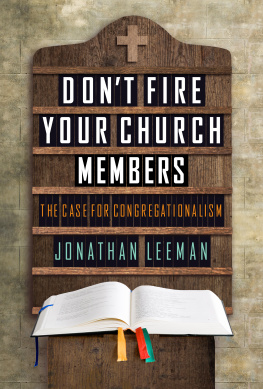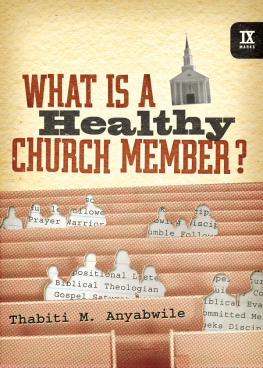But What Is the Church For ?
What Is the Mission of the Local Church?
Neil Darragh
But What Is the Church For ?
What Is the Mission of the Local Church?
Copyright 2021 Neil Darragh. All rights reserved. Except for brief quotations in critical publications or reviews, no part of this book may be reproduced in any manner without prior written permission from the publisher. Write: Permissions, Wipf and Stock Publishers, W. th Ave., Suite , Eugene, OR 97401 .
Wipf & Stock
An Imprint of Wipf and Stock Publishers
W. th Ave., Suite
Eugene, OR 97401
www.wipfandstock.com
paperback isbn: 978-1-6667-3291-7
hardcover isbn: 978-1-6667-2710-4
ebook isbn: 978-1-6667-2711-1
08/23/21
Scripture quotations are from New Revised Standard Version Bible, copyright 1989 National Council of the Churches of Christ in the United States of America. Used by permission. All rights reserved worldwide.
Part I
Perspectives
T his book seeks an answer to the question: What is the church for ? What is its purpose? What is its mission?
People become members of a Christian church and remain members of the church for a variety of reasons. For some, it is something integrated within their own traditional family life or their culture; it is already part of their identity. For others, membership in the church is a way of becoming closer to God, of maintaining contact with the divine, of becoming holier. For others it is the surest way to salvation, both in this world and especially in life after death. For others, it is a duty, something they are obliged to do by divine call or divine command. Others are attracted by the other people who belong to the church, by the way they relate to one another, or by their liturgy. Others are attracted by the churchs teaching, its understanding of the world and of lifes purpose.
These and, no doubt, many other motivations for belonging to the Christian church are personal ones. These are the things we get out of the church through our membership in it. These are what we might call the benefits of membership. Yet, while we might be grateful for these benefits, very few of us, I think, would regard these as an adequate statement of what the Christian church is for . If these personal benefits are all there is, it would make us simply consumers of holy goodies. There is surely something more here, something more generous, life-giving, outgoing, and gracious than just our own spiritual wellbeing.
Nearly all Christians, I think, would agree with this. Certainly, nearly all missionaries, missiologists, and theologians would agree.
This book is a study in what would traditionally be called missiology. As traditionally understood, missiology is concerned with the churchs outreach beyond itselfthe objectives and activities of the church beyond its benefits for those already its members. The church has benefits for its own members, of course, but it does not exist just for itself and its current members. It also has a purpose beyond itself, its mission .
There is little debate today that what an investigator sees depends upon the standpoint of the investigator. Every investigation has a starting point that sets up a particular point of view on the subject of the investigation. An academic theologians point of view is not likely to be that of an active missionary in the field; and an active missionarys point of view is not likely to be the same as that of the person who is the recipient of missionary activity. The choice of the starting point affects everything else that follows.
Part I: Perspectives of this book explains the starting point of this investigation. It also has a preliminary look at the language we use in talking and writing about mission. The traditional language that theologians commonly use among themselves doesnt quite work here because talking about mission is about the interface between church and society. Theological language that is commonly used in church and theological institutions needs to be adjusted so that it easily communicates outwards to the wider society and can itself absorb the wider societys communications inwards to the church. Moreover, there are some ideas, and the idea of the realm of God is one of these, which are central in this investigation and are best explained from the very start.
Part I, then, is intended to deal with these preliminary matters. Effectively, it sets out the approach to Christian mission adopted in this book.
. Other terms such as evangelization or outreach are often used where I have used the term mission. These terms are each a little different in meaning, but for most practical purposes and within the parameters of this book, they should be considered similar or at least overlapping. I do not normally use the term evangelization in this book except where quoting or paraphrasing someone else. This is partly because, within the Catholic Church, the term has come to mean almost everything, and so loses its capacity to pinpoint priorities. Partly, too, it is a neologism that is quite difficult to use both in local church discussions and in the public forum where, in my experience, it needs to be repeatedly explained. This is an issue of public communication which I address in the next chapter.
What Is the Church For?
T he particular way we approach mission, the perspective we adopt in the first place, is very important in any investigation into mission or church.
The perspective on mission and church adopted in this book is best explained by calling attention to five distinct, but interrelated, strands in contemporary understandings of mission and church:
Gods mission,
the missionary nature of the church,
the distinction between the church and the realm of God,
the question of who are missionaries, and
the particular viewpoint of the local church.
This chapter proposes a point of view on each of these five strands.
Gods Mission
The idea that the church has a mission , that is, that the church has a purpose, an outward objective to which church members are committed, is probably the most common understanding of the relationship between church and mission. It was the more common perspective among theologians and missiologists for several centuries up until the mid-twentieth century and it remains common among church members today.
The idea that the mission has a church is less common and is perhaps clearer when expanded to the following: God has a mission in the world and the church is one of the means by which that mission is carried out . In this sense, mission is Gods action in the world and this mission then has a church (a community of believers) which is called to play an important role (we think) in that action. In this case, the priority is placed firmly on mission , that is, Gods action in the world. The church comes subsequently and its nature results from the role it is expected to play in Gods mission. The emphasis on Gods mission within which the church has a part to play, rather than the idea that the church itself has a mission in the world in its own right, so to speak, was an important shift in mission thinking in the mid-twentieth century for both Protestants and Catholics.
In Protestant mission theology, this shift in emphasis is usually dated back to the International Missionary Council meeting in Willingen, West Germany, in 1952 . It was this council that re-conceptualized mission as primarily the mission of God ( missio Dei ). This was a fundamental shift from an understanding of the church continuing the mission of Christ in the world (a Christology-based mission) to a Trinitarian-based understanding of Gods mission in the world in which the church is called to participate.


